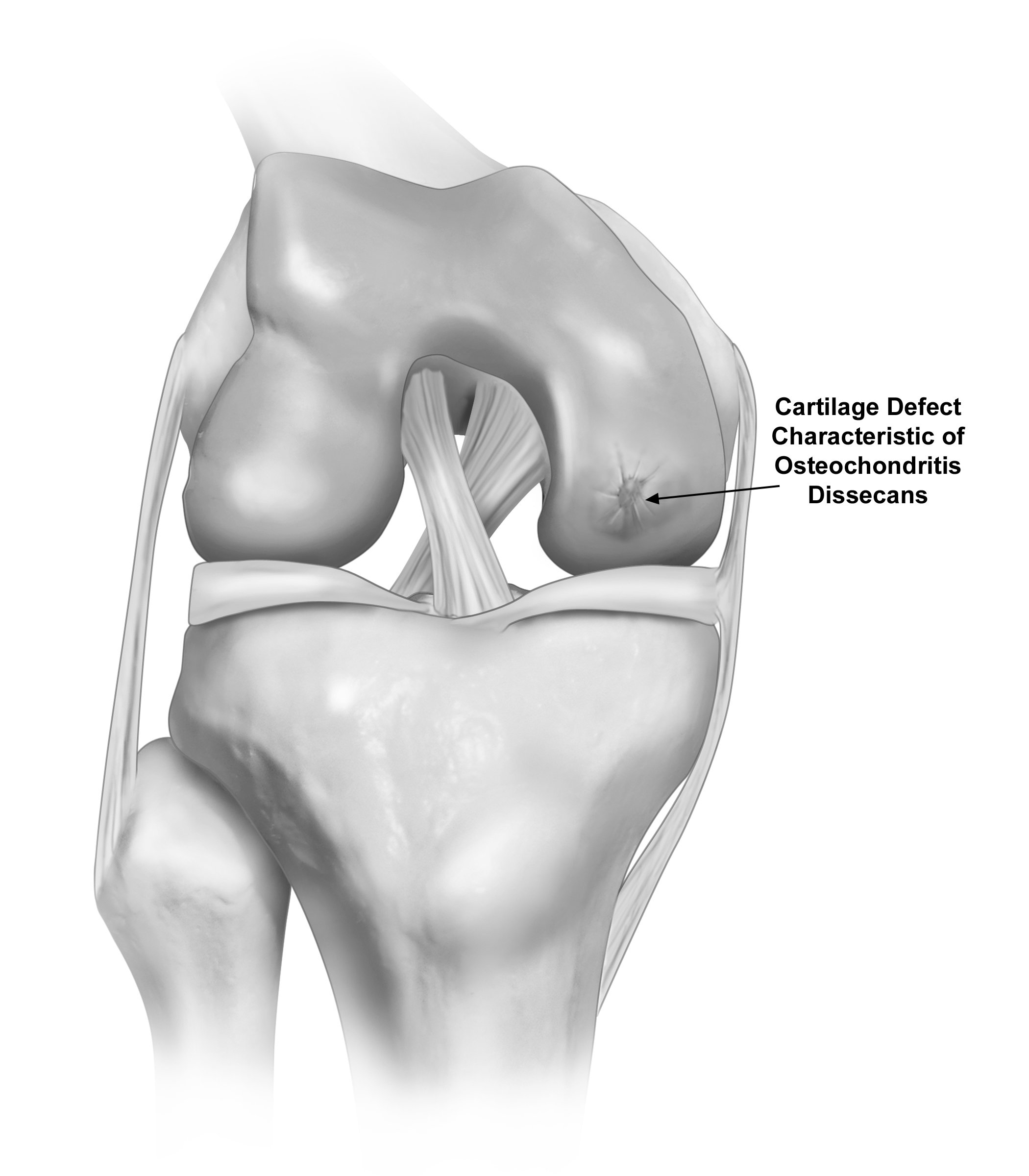Osteochondritis Dissecans
What is it?
Osteochondritis Dissecans, or OCD, of the knee is usually due to an issue in the healing of growth plates and occurs primarily in adolescent, much like Osgood-Schlatter disease.
How does it get hurt/damaged?
OCD likely is likely from the lack of healing of one of the growth centers. If the growth center doesn’t completely heal back to the underlying main portion of the bone, the patient may experience the pain from a partially detached or completely detached OCD lesion. OCD starts off as mainly a bone healing problem below the cartilage, but if the bone doesn’t heal and it falls off, the cartilage surface will then be involved, and it becomes a bigger issue.
The most common location of OCD is at the lateral aspect of the medial femoral condyle, or on the inside of the knee. The second most common is the lateral femoral condyle, or the outside of the knee. A lateral femoral condyle OCD is generally easier to spot as it’s much larger than an OCD on the medial femoral condyle. Other areas can include the trochlea and patella(kneecap).
How common is Osteochondritis Dissecans?
OCD lesions aren’t very common, there are generally less than 5,000 cases per year in the United States.
When should you be worried about Osteochondritis Dissecans and what to do initially?
Early diagnosis of an OCD lesion is crucial so that appropriate treatment can be obtained. While this injury isn’t classified as an emergency, it can cause a lot of pain for those experiencing it. OCD can be evaluated at a clinic visit unless the piece is displaced and the knee is locked up as a result of the loos piece getting between the bones in the knee.
Severity of Injury and Treatment options?
Prognosis for OCD lesions of the knee depends on whether or not the patient still has open growth plates. If they do and the lesion is not partially or completely detached, there is a chance the bone may heal on its own.
Treatment for young adolescents is usually activity modification. Once their growth plates have closed, for girls around 13-14 and for boys around 15-16, the chance for an OCD lesion to heal is low. The treatment for these patients depends on the symptoms they have and it the lesion is detached. These symptoms can range from mild pain during activity to to more severe pain and mechanical issues. Surgery for OCD lesions depends on whether it’s still in place of if it is partially or completely detached and whether or not the bone the lesion is attached to is in one piece or multiple pieces. Fragmented pieces don’t have a very high chance of healing.
What is my recovery timeline and the anticipated outcome?
Recovery and the return to full activity depends primarily on the severity of the lesion. For a younger athlete with open growth plates, they will likely heal well, getting back to their full mobility and activity levels. However, patients who have a partially or completely detached lesion will have further issues with recovery.
Patients will mostly be non-weight bearing for up to 6 weeks and then will slowly be able to wean off the crutches. The lesions can take a full 5-7 months to heal and will need to be closely evaluated my care providers.

